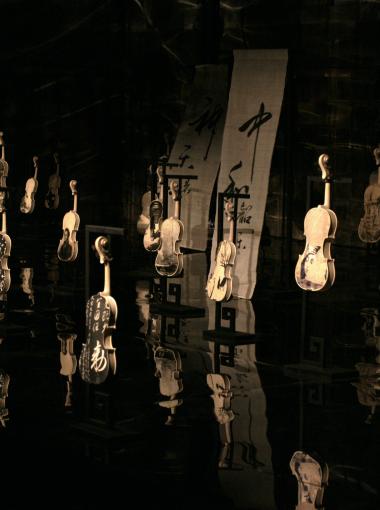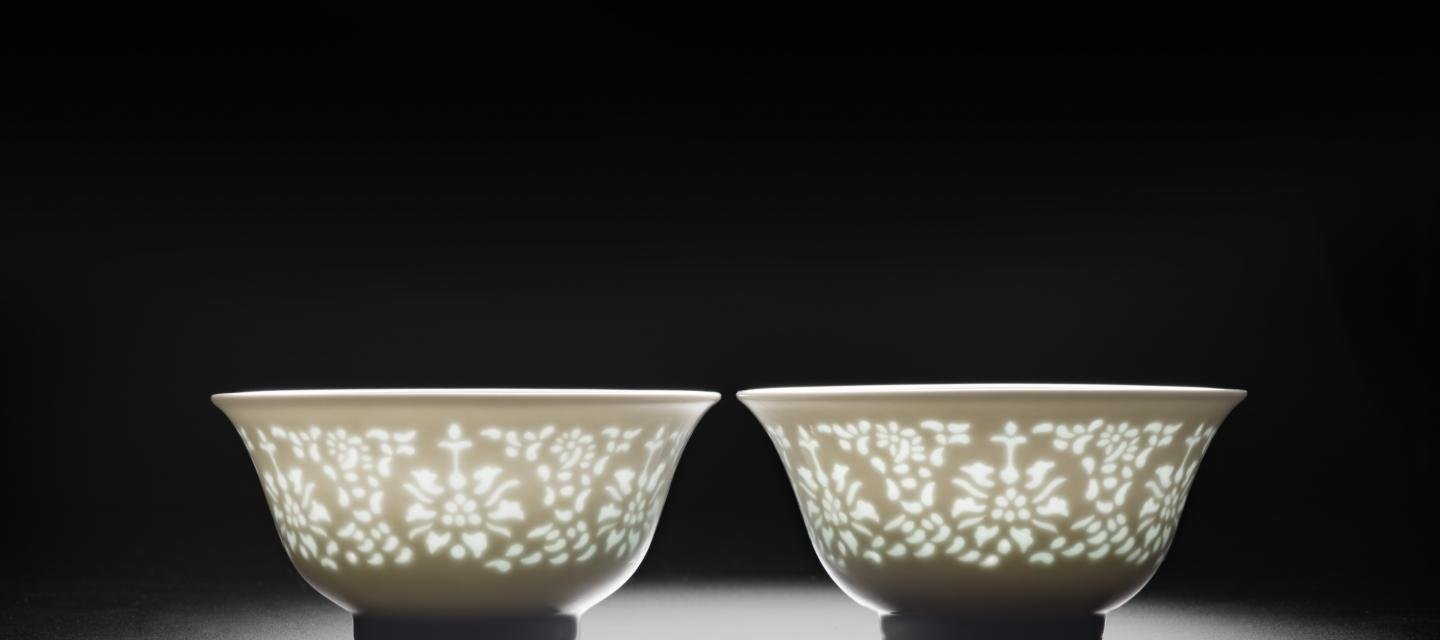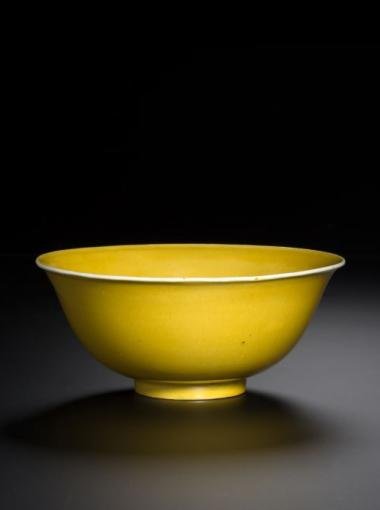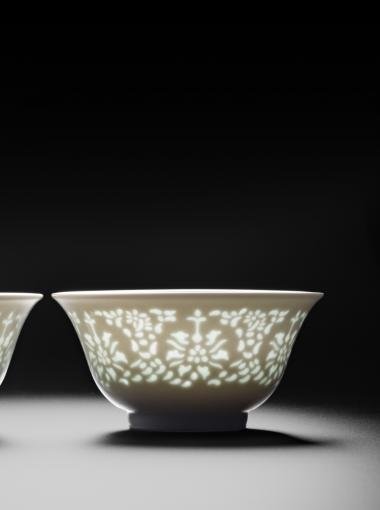

Mercredi 12 juin 2024
9h-17h
Auditorium Jean-François Jarrige
Conditions : entrée libre et gratuite sur réservation (section « Journées thématiques et rencontres »)
Dans la limite des places disponibles
Traduction simultanée
(English translation below)
Programme :
9h
Ouverture de l’auditorium
9h30
Discours introductif par Yannick Lintz, Présidente du musée Guimet
9h45-10h15
Regina Krahl : Couleur secrete, “Chinese Celadons” (anglais)
L'évolution de la céramique monochrome en Chine s'étend sur plus de trois mille ans et peut être suivie de façon privilégiée en retracant l'histoire des céladons. Ces émaux, souvent décrits en Occident comme des verts de mer et en Chine comme des verts de jade, offrent une telle variété de tons, de textures et de motifs de surface qu'ils ne se sont jamais démodés et se sont adaptés aux évolutions stylistiques. Leur appréciation a toutefois connu trois phases assez distinctes qu’il conviendra d’éclairer à l’occasion de cette présentation.
10h15-11h
Lu Minghua : Développement et apogée des glaçures rouges (chinois)
Après avoir mis en lumière le développement des glaçures rouges de la période Tang à la période Ming, Lu Minghua mettra l'accent sur les productions de glaçures rouges de Jingdezhen sous la dynastie Qing, en particulier les glaçures rouges Sang-de-boeuf du règne de Kangxi (1662-1722). L'attention sera également portée sur les glaçures flambées, rouge rubis et aubergine des règnes de Yongzheng (1723-1735) et de Qianlong (1736-1795) afin d'approfondir la compréhension de l'évolution des glaçures rouges des Qing.
11h-11h30
Peter Lam : Couleur Impériale, Trois études sur les glaçures jaunes (anglais)
Réservée à l'empereur et à sa famille sous les dynasties Ming et Qing, la couleur jaune a bénéficié d’un grand prestige. Retraçant son évolution de ses débuts jusqu’au XIXe siècle, cette communication mettra l’accent sur trois études de cas. S'appuyant sur des découvertes archéologiques et des sources écrites renouvelées, il sera question d'identifier la nouvelle provenance d'un groupe de tasses à thé jaunes des Tang, les types et les dimensions des récipients jaunes utilisés à la cour des Ming et la date plus précise de l'introduction de la recette de la glaçure jaune citron à Jingdezhen.
11h30-12h
Claire Déléry : Réception et perception des céramiques monochromes chinoises en Europe (français)
Les céramiques monochromes occupent une place particulière dans l'histoire et la culture chinoises. Très prisées en Europe pour leurs qualités esthétiques, leurs valeurs culturelles n'ont été comprises que tardivement.
14h-14h30
Monique Crick : L'archéologie sous-marine et les céramiques monochromes découvertes dans les épaves (français)
La découverte des cargaisons d'épaves a permis une meilleure connaissance de la diversité des céramiques d’exportation et en a révélé des catégories disparues. Cette conférence, basée sur du matériel archéologique datant du 9e au 19e siècle, examinera le rôle des monochromes dans le commerce maritime à différentes époques.
14h30-15h
Teresa Canepa : Porcelaines chinoises monochromes du XVIIe siècle, Collection Sir Michael Butler (anglais).
Le diplomate britannique Sir Michael Butler (1929-2013) a rassemblé la plus importante collection au monde de porcelaines chinoises du XVIIe siècle. Pendant plus de 40 ans, son choix se porta sur des pièces monochromes aux qualités techniques et esthétiques exceptionnelles, appréciées pour leur sobriété et leur élégance intemporelle. Cete intervention en présente une sélection et examine les nouvelles informations recueillies à partir de sources textuelles et de matériel archéologique.
15h30-16h
Régina Krahl : conclusion
16h15-17h
Echanges avec Richard Kan et les différents participants
///
“Ceramic Alchemy, Chinese Monochromes Porcelains in China, 8th -18th century”
Conference on Chinese Monochrome Porcelains
Wednesday June 12
9 am-5 pm.
Guimet Museum- Auditorium Jean-François Jarrige
Eight scholars reveal the history and secrets of Chinese monochrome porcelains
Simultaneous translation arranged
Programme :
9 am
Opening of the auditorium
9.30 am
Opening speech by Yannick Lintz, Guimet Museum Director (French)
9.45-10.15 am
Regina Krahl: Secret Colour, Chinese Celadons (English)
The evolution of monochrome ceramics in China spans over three-thousand years and there is no better way to trace it than through the history of Chinese celadon wares. Celadon glazes, in the West often described as sea-green, in China as jade-green, offer such a wide range of tones, textures and surface patterns, that they never went out of fashion, since potters continued to create new styles. Thus, the appreciation of these monochrome glazes went through three rather different phases.
10.15-11 am
Lu Minghua: The Development of Red Glazes and its Summit (Chinese)
As an introduction, this lecture will first highlight the development of red glazes from the Tang/Song to the Ming periods. The emphasis will be on the Jingdezhen red glazes productions in the Qing dynasty, in particular Sang-de-boeuf and sacrificial red glazes of the Kangxi reign (1662-1722). Attention will also be given to the flambé, ruby red and aubergine glazes of the Yongzheng (1723-1735) and Qianlong (1736-1795) reigns. It is hoped that the lecture will deepen the understanding of the development and related issues of Qing red glazes.
11-11.30 am
Peter Lam: Imperial Colour, Three Case Studies of Chinese Yellow Glazes (English)
The colour yellow had been regarded as that reserved for the emperor and his household in the Ming and Qing dynasties. This paper will trace the development of the yellow glaze, using iron or antimony as the colourants, through its inception in China to the 19th century. Three case studies using archaeological finds and historical texts of gazetteers and imperial archives will identify the new provenance of a group of yellow tea-cups of the Tang, the types and dimensions of yellow vessels used in the Ming court, and the more exact date of the introduction of lemon-yellow glaze recipe to Jingdezhen.
11.30-12 am
Claire Déléry: Reception and Perception of Chinese Monochrome Ceramics in Europe (French).
Monochrome ceramics have a special place in Chinese history and culture. Although highly prized in Europe for their aesthetic qualities, their cultural values were only belatedly understood.
2-2.30 pm
Monique Crick: Underwater archaeology and Monochrome Ceramics Discovered in Shipwrecks (French).
The discovery of shipwreck cargoes has enabled us to gain a better understanding of the diversity of export ceramics and has revealed categories that have disappeared. This lecture, based on archaeological material dating from the 9th to the 19th centuries, will examine the role of monochromes in trade at different periods.
2.30-3 pm
Teresa Canepa: Chinese Monochrome Porcelains of the 17th Century, The Sir Michael Butler Collection (English).
The British diplomat Sir Michael Butler (1929–2013) assembled the most important collection of 17th-century Chinese porcelain in the world. For more than 40 years he acquired pieces which reflected the technical and artistic achievements of monochrome porcelain and its restrained beauty and timeless elegance. This paper will discuss a selection of pieces and will examine new information gathered from textual sources and archaeological material that has significantly contributed to a better understanding of the production of monochrome porcelains in 17th-century China.
3.30-4 pm
Regina Krahl: Conclusion remarks (English)
4.15-5 pm
Dialogue with Richard Kan and other participants moderated by Henry Howard Sneyd (English).
Free entrance while places are available
Book your free tickets online



